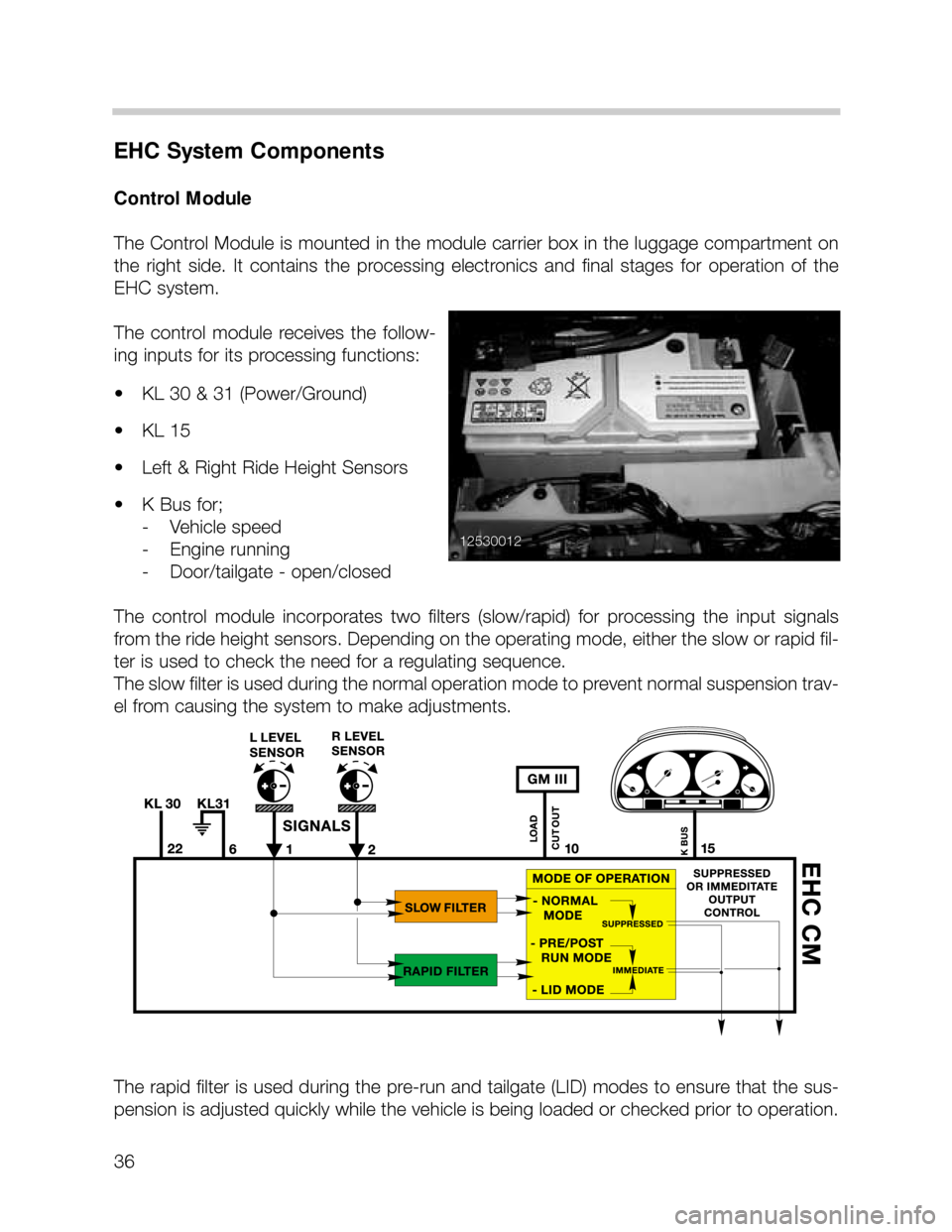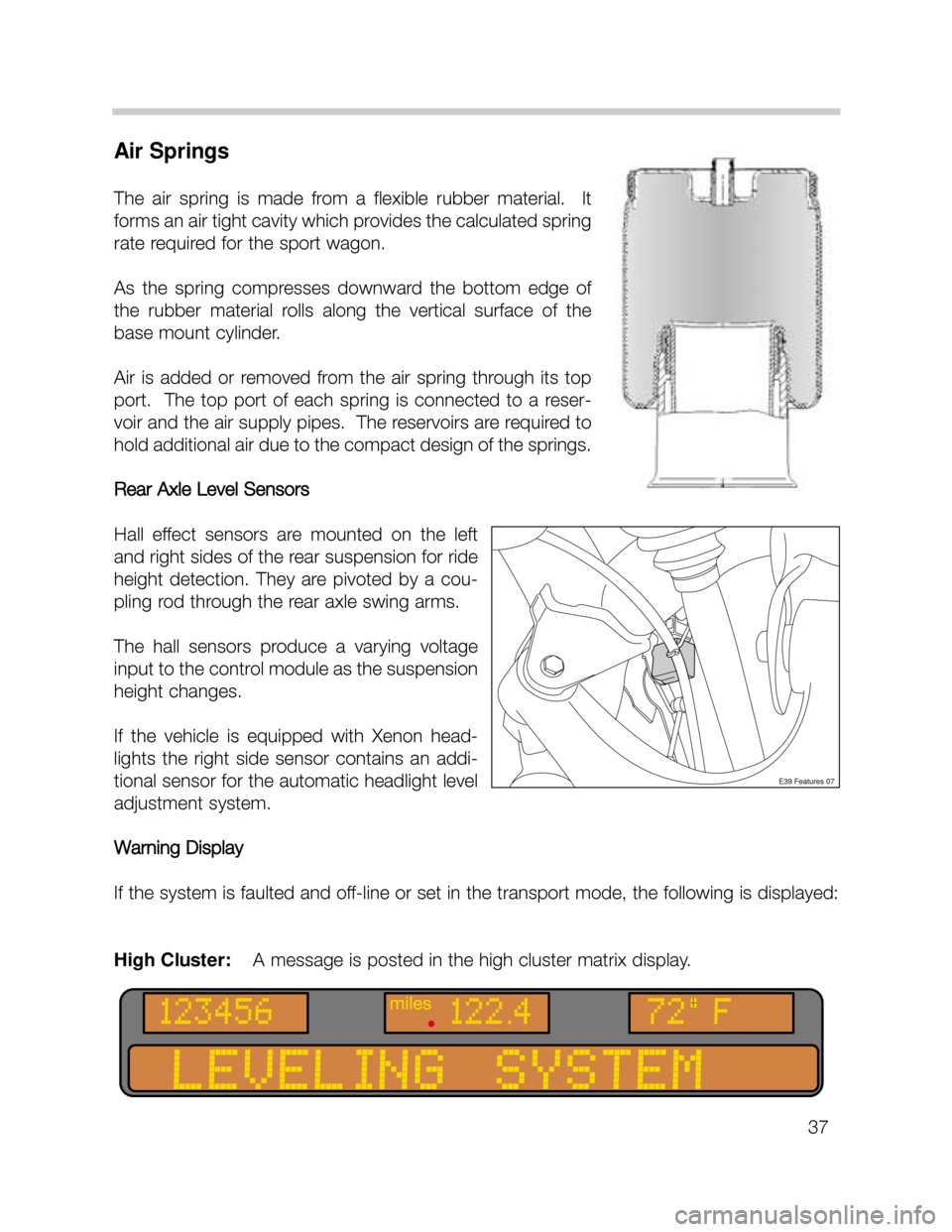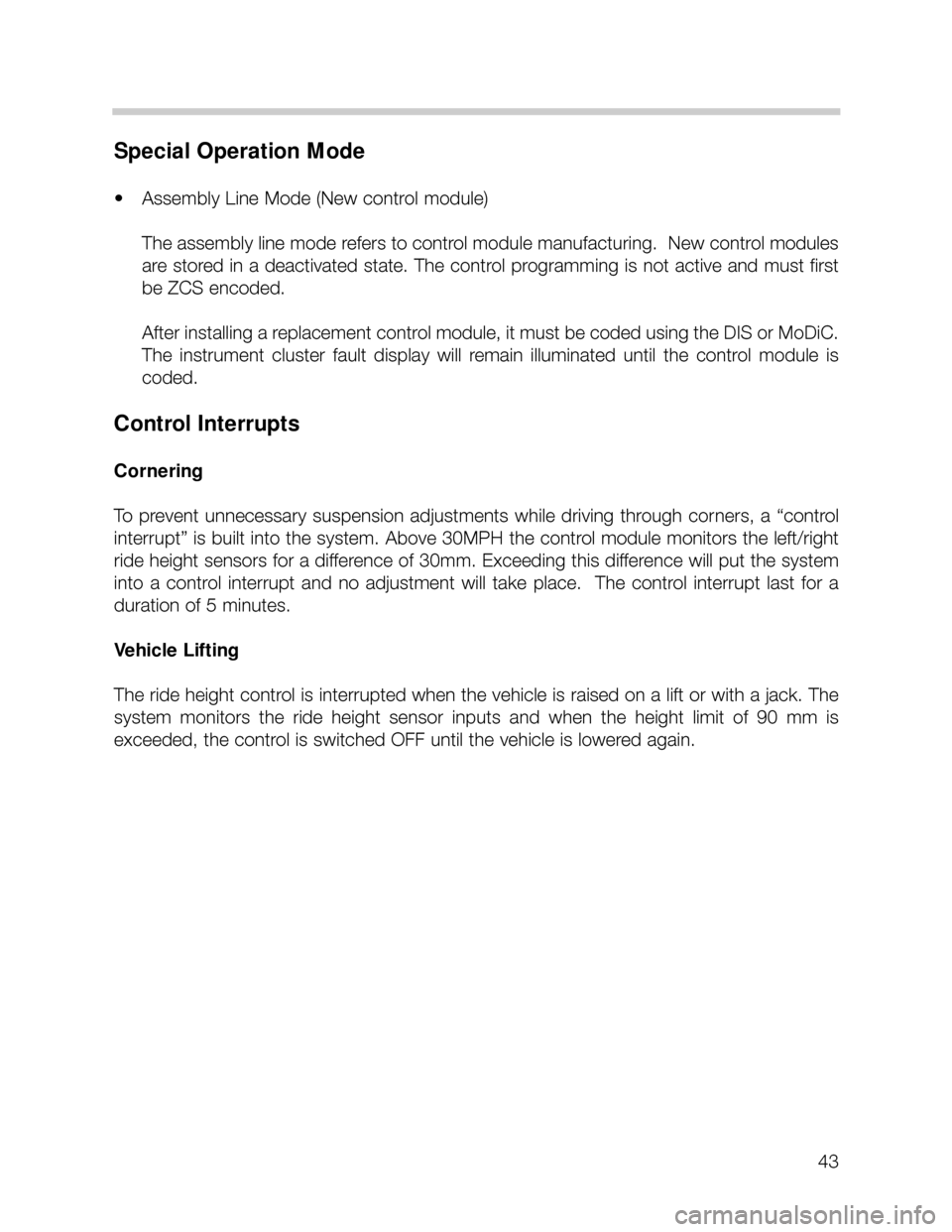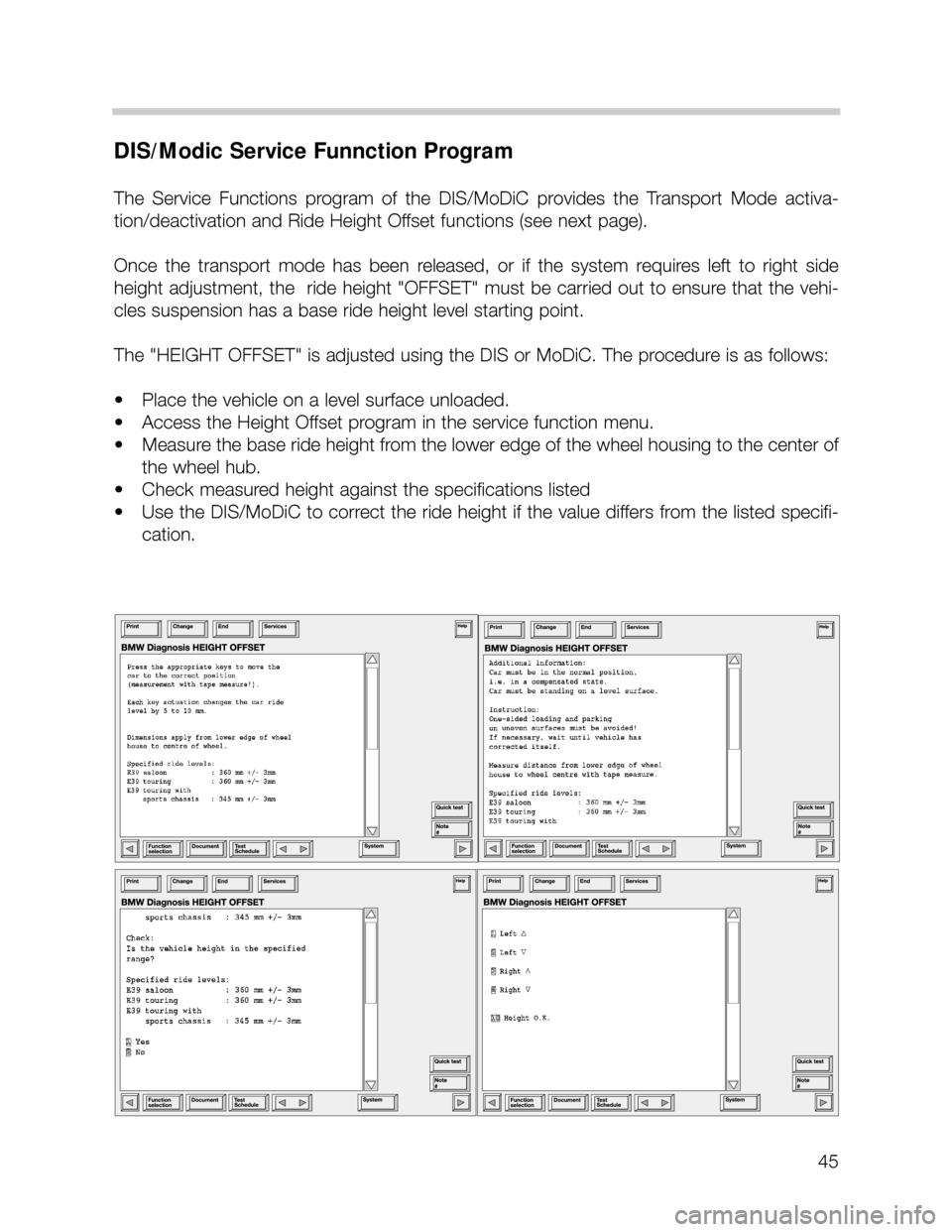height adjustment BMW X5 2000 E53 Workshop Manual
[x] Cancel search | Manufacturer: BMW, Model Year: 2000, Model line: X5, Model: BMW X5 2000 E53Pages: 52, PDF Size: 3.07 MB
Page 36 of 52

36
EHC System Components
Control Module
The Control Module is mounted in the module carrier box in the luggage compartment on
the right side. It contains the processing electronics and final stages for operation of the
EHC system.
The control module receives the follow-
ing inputs for its processing functions:
• KL 30 & 31 (Power/Ground)
• KL 15
• Left & Right Ride Height Sensors
• K Bus for;
- Vehicle speed
- Engine running
- Door/tailgate - open/closed
The control module incorporates two filters (slow/rapid) for processing the input signals
from the ride height sensors. Depending on the operating mode, either the slow or rapid fil-
ter is used to check the need for a regulating sequence.
The slow filter is used during the normal operation mode to prevent normal suspension trav-
el from causing the system to make adjustments.
The rapid filter is used during the pre-run and tailgate (LID) modes to ensure that the sus-
pension is adjusted quickly while the vehicle is being loaded or checked prior to operation.
12530012
Page 37 of 52

Air Springs
The air spring is made from a flexible rubber material. It
forms an air tight cavity which provides the calculated spring
rate required for the sport wagon.
As the spring compresses downward the bottom edge of
the rubber material rolls along the vertical surface of the
base mount cylinder.
Air is added or removed from the air spring through its top
port. The top port of each spring is connected to a reser-
voir and the air supply pipes. The reservoirs are required to
hold additional air due to the compact design of the springs.
Rear Axle Level Sensors
Hall effect sensors are mounted on the left
and right sides of the rear suspension for ride
height detection. They are pivoted by a cou-
pling rod through the rear axle swing arms.
The hall sensors produce a varying voltage
input to the control module as the suspension
height changes.
If the vehicle is equipped with Xenon head-
lights the right side sensor contains an addi-
tional sensor for the automatic headlight level
adjustment system.
Warning Display
If the system is faulted and off-line or set in the transport mode, the following is displayed:
High Cluster: A message is posted in the high cluster matrix display.
E39 Features 07
37
Page 43 of 52

43
Special Operation Mode
• Assembly Line Mode (New control module)
The assembly line mode refers to control module manufacturing. New control modules
are stored in a deactivated state. The control programming is not active and must first
be ZCS encoded.
After installing a replacement control module, it must be coded using the DIS or MoDiC.
The instrument cluster fault display will remain illuminated until the control module is
coded.
Control Interrupts
Cornering
To prevent unnecessary suspension adjustments while driving through corners, a “control
interrupt” is built into the system. Above 30MPH the control module monitors the left/right
ride height sensors for a difference of 30mm. Exceeding this difference will put the system
into a control interrupt and no adjustment will take place. The control interrupt last for a
duration of 5 minutes.
Vehicle Lifting
The ride height control is interrupted when the vehicle is raised on a lift or with a jack. The
system monitors the ride height sensor inputs and when the height limit of 90 mm is
exceeded, the control is switched OFF until the vehicle is lowered again.
Page 45 of 52

45
DIS/Modic Service Funnction Program
The Service Functions program of the DIS/MoDiC provides the Transport Mode activa-
tion/deactivation and Ride Height Offset functions (see next page).
Once the transport mode has been released, or if the system requires left to right side
height adjustment, the ride height "OFFSET" must be carried out to ensure that the vehi-
cles suspension has a base ride height level starting point.
The "HEIGHT OFFSET" is adjusted using the DIS or MoDiC. The procedure is as follows:
• Place the vehicle on a level surface unloaded.
• Access the Height Offset program in the service function menu.
• Measure the base ride height from the lower edge of the wheel housing to the center of
the wheel hub.
• Check measured height against the specifications listed
• Use the DIS/MoDiC to correct the ride height if the value differs from the listed specifi-
cation.